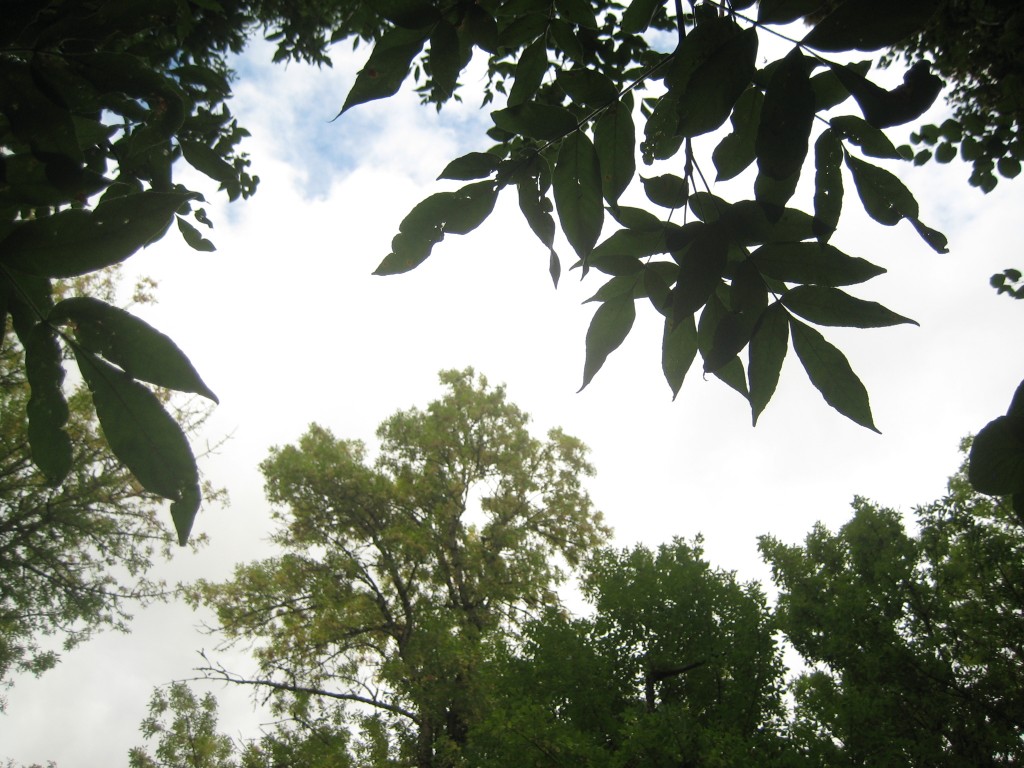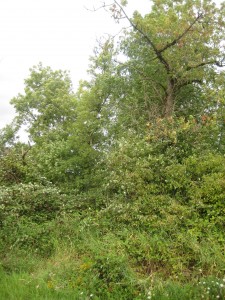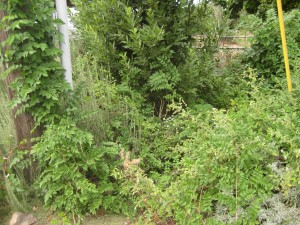People often ask Casey how we “got into” farming. The story could take many forms, depending on when you want to begin the narrative and what you want to focus on. But, for sure, two great loves steered us in this direction (so long ago now!). First, a deep love for the natural world. We are both continually in awe of the world around us — its beauty, its vitality, its power. Farming allows us to live our life (and make our living) interacting with the natural world in profound ways.
Second, Casey and I both share a love for what we have always called “subverting the dominant paradigm.” From very early on in our relationship (when we were exceedingly young), we recognized this shared quirk in both of us. It wasn’t so much a desire to be “weird” or stand out in some significant way, but an enjoyment for unraveling the obvious, for looking past the surfaces and the status quo, for thinking hard and in new ways about subjects, finding new ways to do things. I think that desire to think about the world differently is a big part of why we chose to farm. Certainly at the time, it felt like a very different choice (just 10 years later, it is hard to remember that we were in fact at the very front of the wave of new farmers — we knew of very few others like us at that time, whereas now we have plenty of wonderful company in this endeavor!).
In recent years, we’ve been able to exercise both these loves as we’ve slowly and joyfully unraveled our old understandings of ecology and humanity’s role in the shaping the natural world. As with anything, I have to credit first our real world experiences. So much of our viewpoints in life begin outside, in our first-hand interactions with the world. These shape so much.
But, then we read a book by Charles Mann (of course! Books are awesome!): 1491: New Revelations of the Americas Before Columbus. It’s a long book, but so amazing in how it shifted our understanding of the Americas and their history, both in terms of people and the earth itself. Among other things, Mann makes a strong case that so much of what Europeans saw as “wild” or “natural” in the American landscape (i.e. not of human origin) was actually the product of human influence over centuries of husbandry, cultivation, and massive earth works projects.
This book transformed the way that Casey and I see our environment too. First, this new paradigm suggests that vibrant nature is not incompatible with human influence. As farmers, this is a heartening viewpoint, and we certainly hope that our actions boost nature’s powers! But, we also saw our immediate landscape differently too. As we have continued to learn more about the place where we live and its “native” flora and fauna, we realize that we live in a highly edible environment. As we walk through the cottonwood forest to the river, we find salmonberries, oyster mushrooms, licorice fern, nettles, and pacific waterleaf (a wild green). At the river, we see patches of wapato, a water plant that was cultivated on a large scale by pre-European-contact peoples for its root. Elsewhere in the valley, one can still find patches of camas, another plant cultivated for its sweet root. Signs of former people are everywhere in these plants that they cultivated. Not all of them thrive without human influence (camas certainly does not), but they remain here nonetheless, and we take great joy in their presence.
We were excited to get our hands on another truly paradigm shifting new book by Fred Pearce: The New Wild: Why Invasive Species Will Be Nature’s Salvation (published just this summer). This is a book that addresses a wide range of subtopics, but Pearce’s main thesis is that the contemporary bias against “invasive” species (i.e. not native) is completely misguided and working on inaccurate understandings of how nature works (based on pretty strong paradigms within modern ecology and conservation about how ecosystems “work”). I cannot properly summarize the extensive research that Pearce brings to this argument, which includes a careful analysis (and debunking) of research that “concludes” that invasive species are the primary cause of ecosystem problems. Pearce points out that where non-native species appear to have “taken over” ecosystems, they have often done so in the wake of pollution, erosion, or other forms of environmental degradation. Rather than being the cause of the problem, they actually represent the solution to the problem, as these new species can survive and thrive in an human-altered environment that is no longer suitable for native species of plants and animals. He goes on to point out that, in many cases when the cause of degradation is addressed, the older native species return.
His arguments and research are fascinating. And extremely uplifting. Casey and I often find ourselves pretty bummed out by environmental news. Conservation efforts to preserve “pristine” habitats seem, quite frankly, doomed in a world of 7+ billion people. In the midst of that despair, Pearce brings a new message — nature is always in flux. Nature is strong because it continually adapts. What we see as “pristine” places are actually snapshots in time, and where degradation or changes happen, nature will bring its own solutions — if we let it. His message is one of vitality — not always in the forms that we currently expect or want — but in ways that can thankfully exceed our limited expectations.
Once again, reading a book like The New Wild helps me see our landscape in new ways. I feel like Pearce gave me a way to better appreciate parts of our farm that Casey and I have always marveled at, in spite of their oddities. We have a lot of “messy” parts of our farm — lots. Edges of fields, riparian zones along the creek, weedy fields. In each of these places, a mixture of native and non-native plants mingle, including lots of non-natives that top lists of “invasive,” despised plants here in Oregon — including reed canary grass and Himalayan blackberry. And, yet, on our farm, these plants co-exist with others, including many natives. Blackberries form a hedge around the base of ash trees, and the reed canary grass grows at the base of willows.
Meanwhile, our farm is bursting with fauna, which often seems to be the marker of a healthy environment. A good wildlife biologist friend of ours loves to come to our farm for bird watching and claims that it is really truly one of the best places in the county for that pursuit. Our farm is certainly a wonderfully wild place, but of course just our 100 acres couldn’t be home to these animals without a larger wildness around us. We have the benefit of being on Grand Island, where messy, verdant patches ring the whole island (including our most beloved cottonwood forest, which by the way, is called an “orchard” by the old timers, because it was planted — and later thinned — by farmers to prevent erosion during floods).
Just last week, Casey and Dottie crouched for a long time at the edge of my mom’s herb patch, which is full of non-native species in bloom (including heaps of mint!!!! Watch out!). In just one little square-foot patch of the garden, they watched a praying mantis and four kinds of pollinators (two of which Casey didn’t even recognize as being familiar). Life abounds!
To us, the resilience of nature is a hugely optimistic message. Does it free us from the responsibility to care for the land? To prevent further degradation? Not at all! That is why Casey and I put our heart and soul into this work of producing food in ways that grow topsoil and grow local biodiversity. But, nature’s resilience can help us set aside our despair and renew our pure wonder at these places we love, places that we know are constantly changing.
It will be interesting to learn if/how Pearce’s book affects wider ecological paradigms and conservation goals. Without a doubt, there will be push back. And I understand some of that too. These conversations are complex and the real world doesn’t neatly fit into any human narrative — Pearce’s or otherwise. It will be interesting to watch the conversation continue, and we will gladly read any other books that join that discourse.
Either way, our observation is that nature is resilient! Regardless of what comes to us humans, I have faith that the Himalayan blackberry and Canada thistle will always be here, providing food for pollinators and forage for animals. That may not sound idyllic, but these are the plants that will continue to exist regardless. And for them, I can feel grateful. Really, truly. Thanks be!
Enjoy this week’s vegetables!
Your farmers, Katie & Casey Kulla
~ ~ ~
Meet this week’s vegetables:
- Chehalis apples
- Concord grapes
- Asian pears
- Prune plums
- Tomatoes
- Green peppers
- Salad mix
- Celery leaf
- Parsley
- Kale
- Carrots
- Beets
- Potatoes
- Cucumbers
- Zucchini & yellow crook neck squash
- Eggs
And this week’s extra goodies from the farm:
- Eggs — $6/dozen
- Pork chops — $12/lb
- Lamb — We’ve got chops, roasts, shanks, and lots and lots of ground lamb! Prices vary depending on the cut.
- Ground beef — $7/lb in 1 lb packages.
- Bratwursts & ham — Next week! These things often take longer than we expect.






Wow, this was a great one, Katie. It might be one of those read-the-review-so-you-can-skip-the-book ones for me, but I loved your take on it!
Your letter has inspired me to read these volumes. Great insite. Thank you for your great newsletters.
Granny Mary
Katie—both books sound fascinating (although your pitch is pretty easy to a librarian/geographer/naturalist like me). I’m a bit bedeviled by Pearce’s argument, though, and I am curious about his research.
I wrote my undergrad thesis about reed canary grass in the southern Willamette Valley, basically making the case that it’s an aggressive invader and needs to be treated as such with aggressive control methods. Anyway, I’d love to chat more about The New Wild after I get a chance to read it (I’m so looking forward to doing more reading in the coming seasons).
How long is the book, “The New Wild”? Is it one I might be able to read on flights to and from Detroit MI? Also, I don’t want to leave you in the lurch, but if there is someone else who might want the 1/2 lamb, it would probably work better for me to get that after Thanksgiving. Let me know if that doesn’t work.